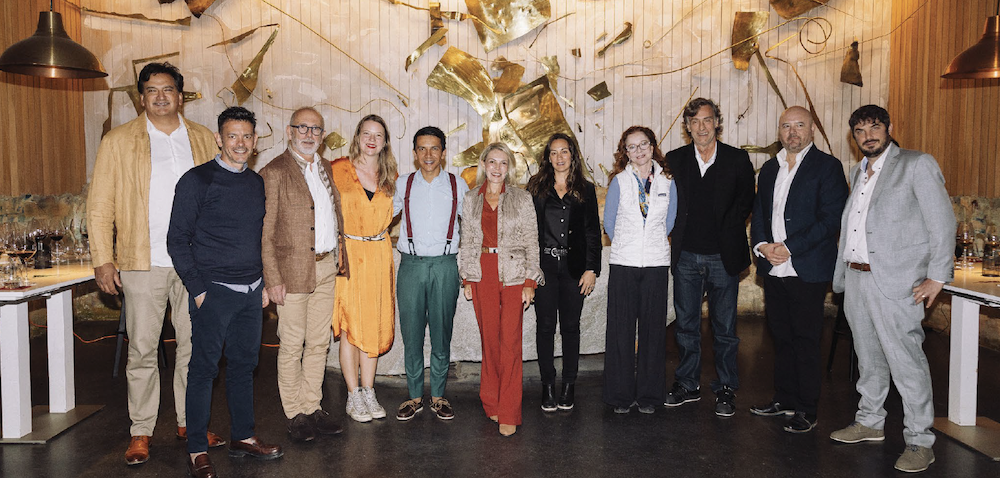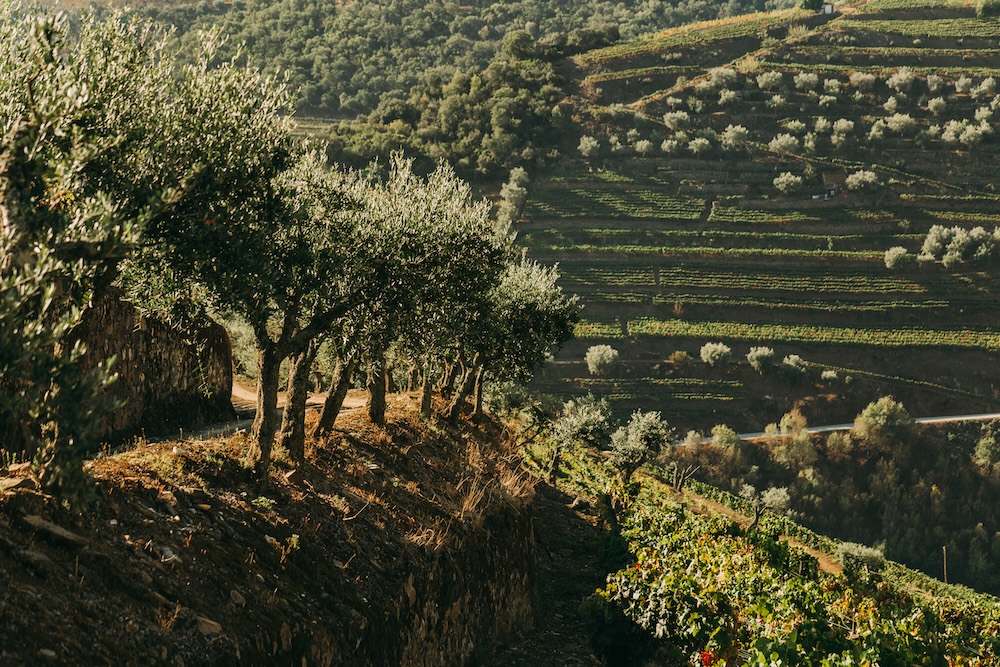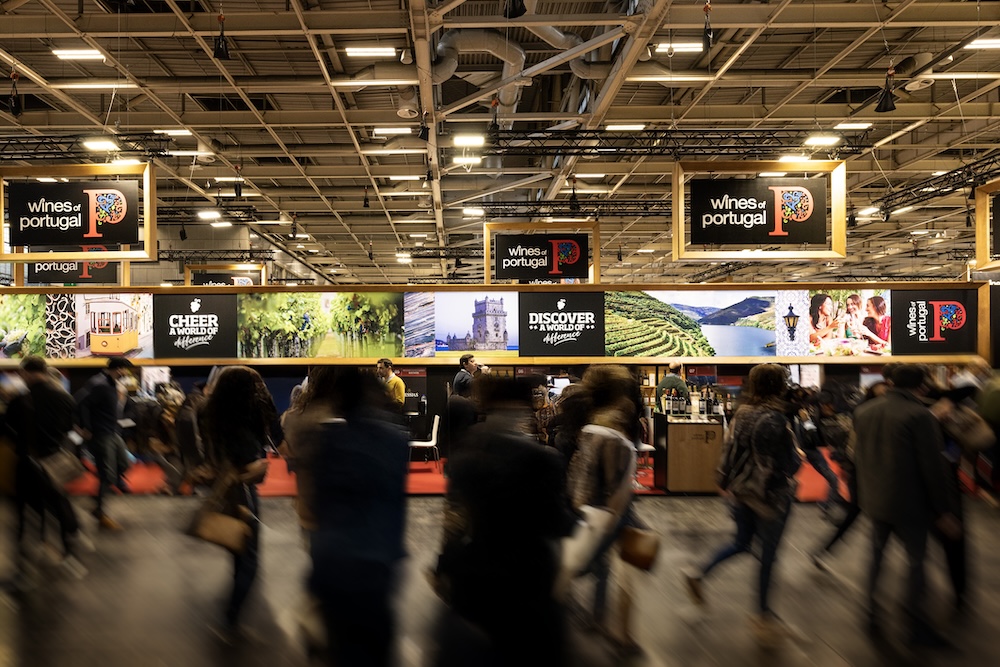
Discovery

Discovery
By Isabelle Escande - Photographs: courtesy of the estates, posted on 06 November 2023
Traditionally, a large share of Portuguese wines have been drunk within the country. But over the past few years, exports have been on the increase. From attractive price points to native grape varieties and an extensive product range, the reasons for their popularity in the global marketplace are legion. And Portuguese companies have set their sights on securing a prime position for their wines overseas.
The era when Portuguese wines for overseas markets were invariably Port or Madeira is now long gone. The storied Douro Valley is now also renowned for its dry, fresh still wines, alongside its celebrated fortified offerings. Outside the region, other areas have gained traction, like Alentejo with its full-bodied, fruity reds or Vinho Verde and its young, crisp whites that have become extremely popular. Despite the fact the appellation borders the Port vineyards, its image could not be further removed from that of the neighbouring fortified tipples. Sporting a near-on transparent colour, they display trademark acidity and faint beading, light-years away from the rich, powerful style of Port.
Obviously, the contrast in styles acts as a magnet for an international audience, especially when the country’s wine proposition aligns with a number of consumer trends, including a taste for light, fresh pours and the appeal of ‘authentic’ wines honouring their birthplace. Portuguese producers can pride themselves on a long-standing history of making wine and have often focused on regionality. In fact, a defining feature of the Portuguese wine industry is its wealth of native grape varieties – both red and white – which are said to exceed 300 in number. Also, from a genetic perspective, these local varieties differ greatly from other Old World cultivars, bar those of the South of France.
Winegrowers do not only safeguard the typicity of their wines, though. Over the past few years, they have also embraced modern winemaking techniques in a bid to improve quality. European funding for this has been a valuable resource. The decision to favour a quality production model that steers away from productivity has borne fruit – Portugal is now the world’s eighth largest wine exporter with exports rising both by volume and value.
The country has successfully bolstered its presence in long-standing markets like Europe, the United Kingdom and the United States, but has also diversified its import destinations. Present-day wineries have stepped up their communications activities in Asia – in countries like South Korea and China – where Portuguese wines are increasingly popular. We met five of the country’s wineries to find out how they view the changes and their strategies for maintaining and optimising their positioning in markets around the world.
José Maria da Fonseca’s vineyards are mainly located on Setúbal peninsula, along Portugal’s western coast, where the first vines were allegedly planted on the Iberian Peninsula. Although the winery does not date back to Antiquity, it nevertheless boasts a time-honoured tradition of winegrowing. Founded in 1834, it is one of the oldest producers still operating of the famous Moscatel de Setúbal, the region’s star pour which was already being exported in the 14th century – Richard II of England was very fond of it.

Fast forward to 2023 and the heirs of the company’s founder – after whom the family-run firm is named – are continuing in his footsteps, honouring the winery’s reputation for excellence that has been garnered over its two-century history. It now boasts nearly 650 hectares under vine and state-of-the-art winemaking equipment on a par with the world’s top wineries. It has extended its portfolio of vineyard blocks on Setúbal peninsula but also acquired vineyards in Alentejo and the Douro.

The winery is constantly moving forward and positioned at the cutting edge of research and innovation. It has set itself a challenge that mirrors its ambitions – to become a sustainable firm across its business, in the vineyards, winery, bottling facilities and sales department. The project dictates the company’s export strategy. Seeking out new export destinations is now off the agenda – although admittedly José Maria da Fonseca-labelled wines are already present in the many import countries across the globe. Emphasis is now placed on ramping up the company’s presence in existing markets, and even more importantly, favouring quality over quantity.
The company exports 50% of its wines, most of them red, although recently demand for white, rosé and sparkling wines has grown, comments Marta Oliveira, the winery’s sales assistant. The trend reflects current consumer demand for lower alcohol wines. The Portuguese wine proposition is extensive and therefore caters to demand across the international marketplace. The range is not only varied, stresses Oliveira, but also unique with grape varieties very seldom found in other producer regions.

Aveleda, the largest producer and exporter of Vinho Verde, offers a great illustration of the rise of Portuguese wines internationally. Founded in 1870, the company has been owned by the Guede family for 5 generations. Over the course of its 150-year history it has garnered a strong reputation with a foothold in 5 regions across Portugal – Vinho Verde, Douro, Bairrada, Algarve and Lisbon – exporting to over 80 countries. The United States, Germany, Brazil, Canada and France are its leading export markets but the company also takes a keen interest in Eastern Europe, oriental countries and South America, explains sales director Gustavo Monteiro.

Despite its exponential rate of growth, the winery has remained true to its ethos – a fine eye for detail. Both in the vineyard and the winery, every task is meticulously handled from gentle pressing to low-temperature fermentation for example, with a hands-off approach favoured. The entire business is run sustainably and the environment treated respectfully by preserving biodiversity and terroir integrity, for instance.
In fact, concern for quality is at the root of Portuguese wines’ success in global markets today, claims Monteiro. “They offer value for money which is highly valued internationally”, he adds. They perhaps lack some exposure still – due to fairly low production levels and their mostly off-trade positioning overseas – but clearly a new trend is emerging”. A noticeable increase in the number of Portuguese wines entered in major international competitions underscores this.

Aveleda, which helped secure awareness for Vinho Verde beyond national borders, was awarded a gold medal in the latest Gilbert & Gaillard International Challenge for one of its wines from the famed appellation. With its notes of white flowers and citrus fruits, it displays the kind of freshness that is sure to make it a crowd-pleaser.

Although the historic town of Guimarães – once the capital of Portugal – is listed as a Unesco heritage site, there is another reason why it now attracts increasing numbers of visitors. People travel to see its surrounding vineyards, home to the Vinho Verde appellation. Nestled amidst the lush countryside in northern Portugal, it is the birthplace of mostly white wines that are dry with faint beading. Their name stems not from their colour, but from their youthfulness. Produced from early-harvested fruit, the wines are also bottled early and should be drunk quickly.
Traditionally favoured by a local audience, over the past few years the wines have successfully established a reputation worldwide due to efforts by the region’s winegrowers – spearheaded by the co-operatives – to embrace modern winemaking techniques. Wineries have fitted state-of-the-art technology – including stainless steel fermenters and temperature control – and now focus on quality.
Founded in 1962, Adega Cooperativa de Guimarães is a key player within the appellation and one of the driving forces behind its newly-minted reputation. The co-operative’s vineyards are planted on granite soils along the banks of the river Ave. They produce mainly white wines from a variety of grapes such as Loureiro, Arinto, Alvarinho and Trajadura. “These varieties are well-suited to the sites in the region and fully express the hallmark freshness and aromas of Vinho Verde”, explains the co-operative’s winemaker.

Forty percent of the co-operative’s wines are now bound for export markets. Although the war in Ukraine has in recent months put a dent in its upward export trend, comments the co-op’s Bruna Almeida, overseas consignments have undeniably been on the increase over the past few years. Europe and Brazil were the first to take an interest in Vinhos Verdes, but the winery is now starting to export to other destinations, including Korea, Taiwan and China. “These are currently the markets where we are investing the most, through visits and attendance at fairs”, admits Almeida.
But what is so different about Vinhos Verdes that they stand out from the crowd? Their fruit characters and freshness on the palate, along with their varietal blend, “which make them quite simply unique”. So now you know.

The first Portuguese wine company to win a gold medal at a prestigious international competition in 1997 for a red wine entirely made from a native grape variety – Braga, to be more specific – Adega de Cantanhede turned the spotlight on Portugal’s extensive range of vine varieties and paved the way for Portuguese wines to enter the global marketplace, explains winemaker Osvaldo Amado.

From the very outset, when it was founded in 1954 by a hundred or so grape growers, the co-operative has firmly believed in promoting Portugal’s viticultural heritage to tap into export markets. To secure shelf stand-out and assert its identity in relation to its well-established competitors, the native grape varieties which lend Portuguese wines their unique style have become a goldmine for the winery.
The traditional grape varieties in the Bairrada region, where the co-operative is located, in the Centre-West of Portugal, are showcased. These include Baga – some of the vines are over 90 years old – Bical and Maria Gomes, alongside other Portuguese varieties that thrive in the Bairrada appellation area such as Touriga Nacional, Aragonez and Arinto.
With such an extensive varietal range to leverage, the co-operative is able to supply a wide variety of wines, and this has proven to be a significant bonus in export markets. Its varied portfolio – including reds, whites, rosés, fortified and classic method sparkling wines – enables it to cater to countless tastes. This is further bolstered by the fact that its range runs the gamut, from entry-level table wines to premium pours, securing it a place in over 20 overseas markets.
Renowned winemaker João Portugal Ramos, now a household name in the international market, has made a major contribution to the reputation of Portuguese wines around the world. His sought-after wines are produced in four regions – Alentejo, Douro, Beiras and Vinho Verde – and are the best-selling Portuguese wines in several countries.

The company has always focused on foreign markets, explains winemaker João Maria Ramos, the founder’s son. “Over the years, we have increased our export volumes which now account for 70% of production”. Traditionally, João Portugal Ramos-labelled wines have been sold in the United States, Brazil, the United Kingdom, Sweden, Poland, Belgium and Switzerland, but they are now making a name for themselves in Australia, China, Angola and South Africa. The company has increased its attendance at international fairs and ramped up its sales team to bolster its presence in emerging markets.
But the main driver behind its success is its constant concern for quality and its ability to adapt to market demand, stresses Ramos. Consumers now are increasingly looking for sustainably produced, responsible wines, whose credentials can be demonstrated, he comments. And at João Portugal Ramos there is no shortage of green initiatives, from protecting biodiversity to use of natural fertilisers, minimal intervention and optimised water usage, to name a few.

Also, the winery has recently invested in wine tourism, deemed to be an “extremely important resource for helping our wines achieve success overseas”, claims Ramos. “Portugal welcomes millions of holidaymakers every year and many of them want to visit wineries. We want them to enjoy a unique experience and that when they leave, they look out for Portuguese wines in their home country”. The circle is now complete.


Discovery

Discovery

Discovery